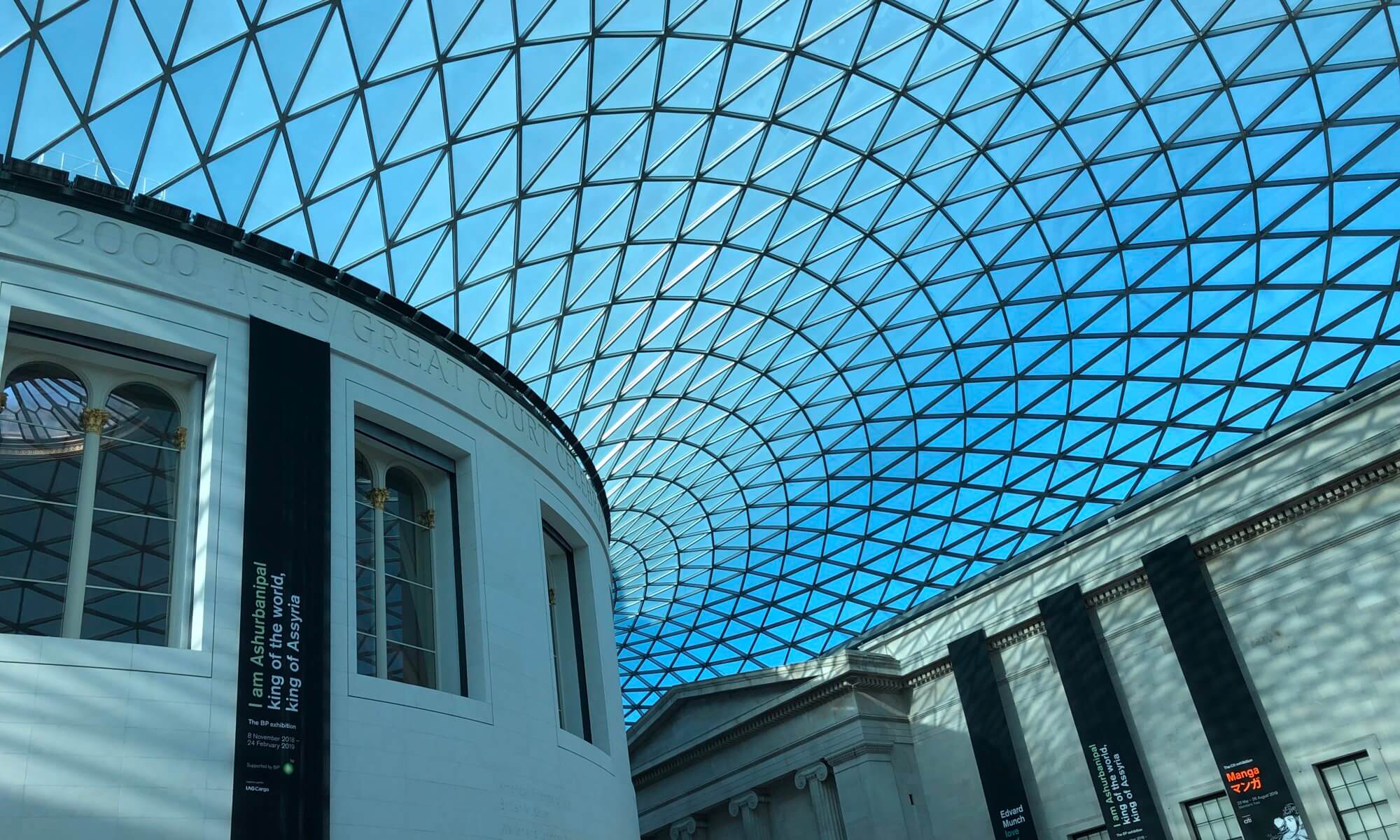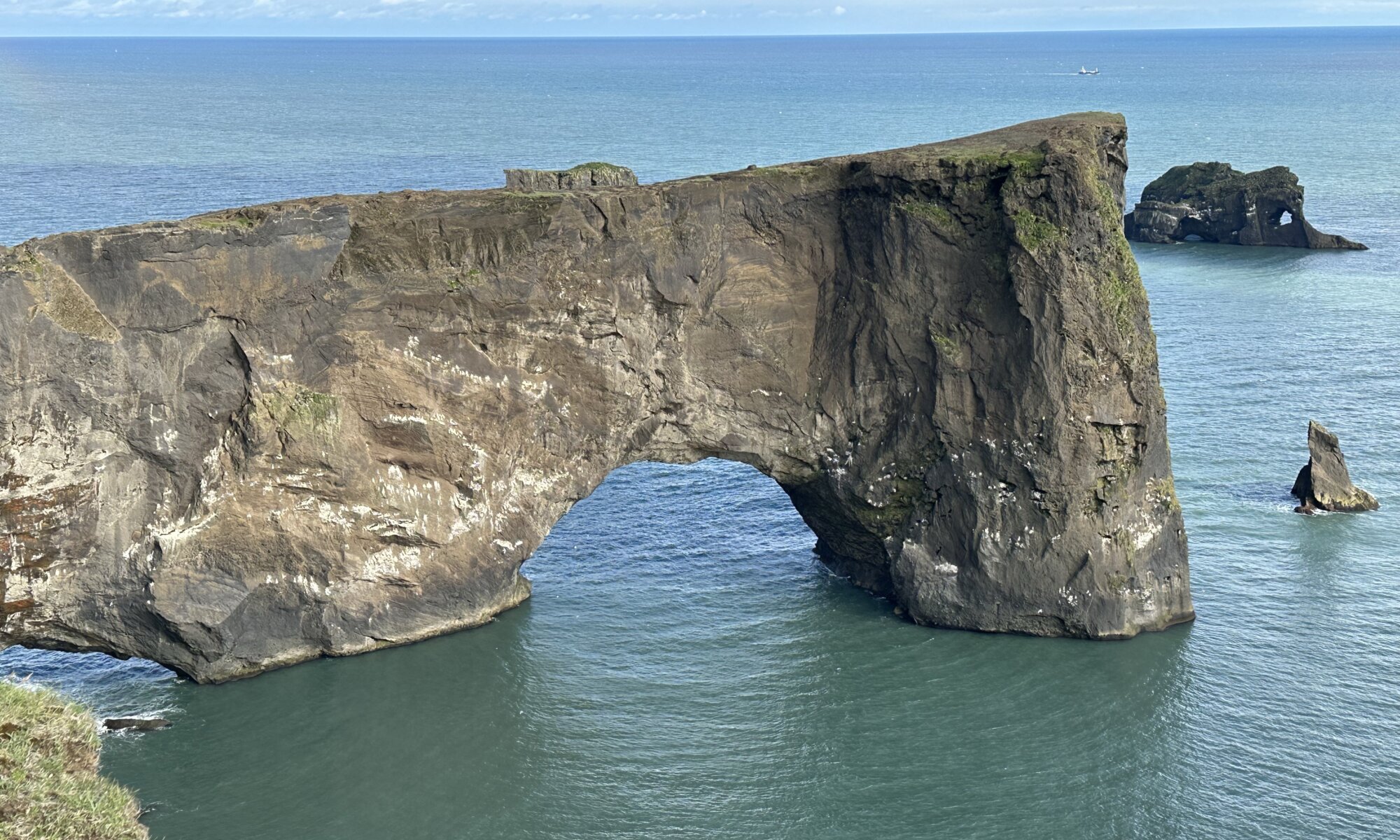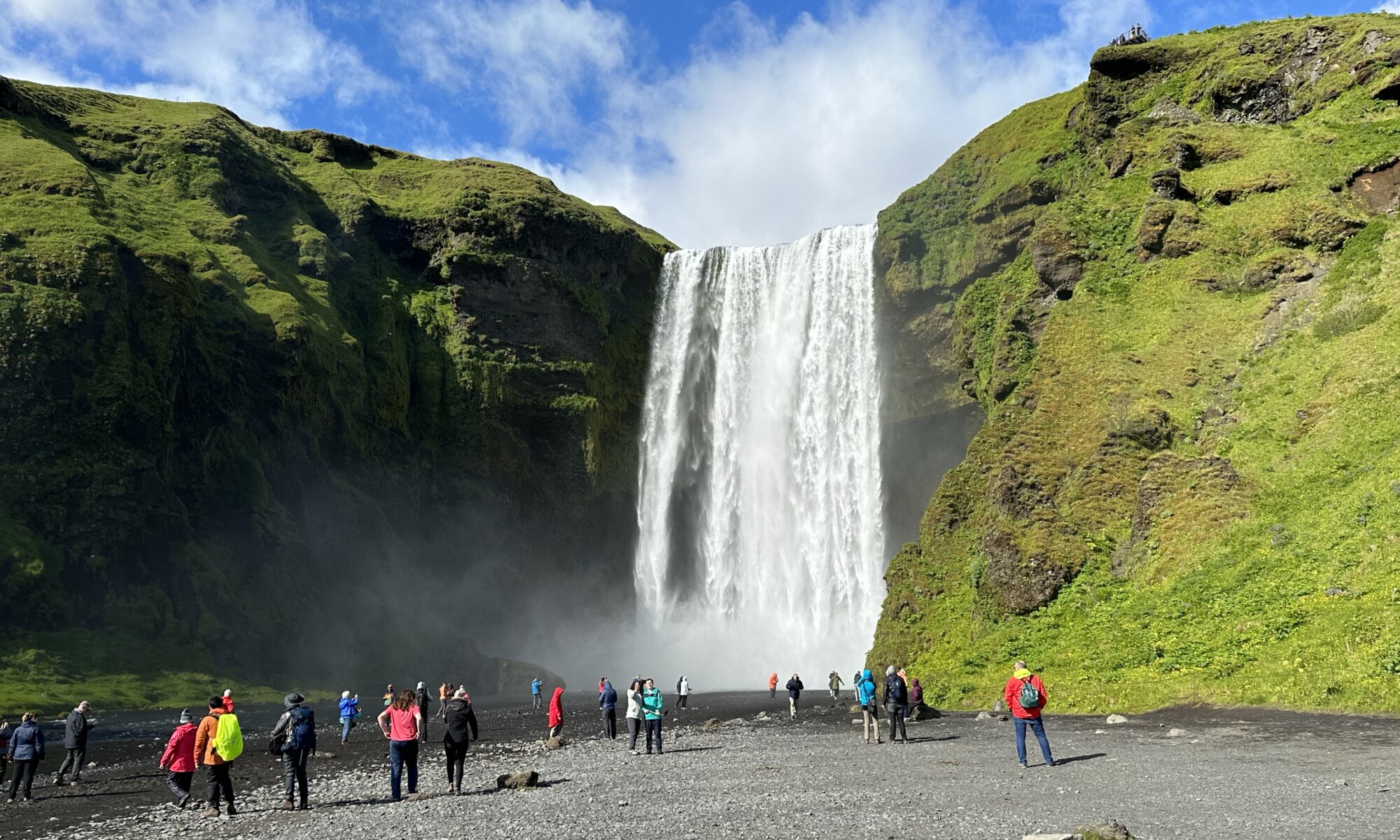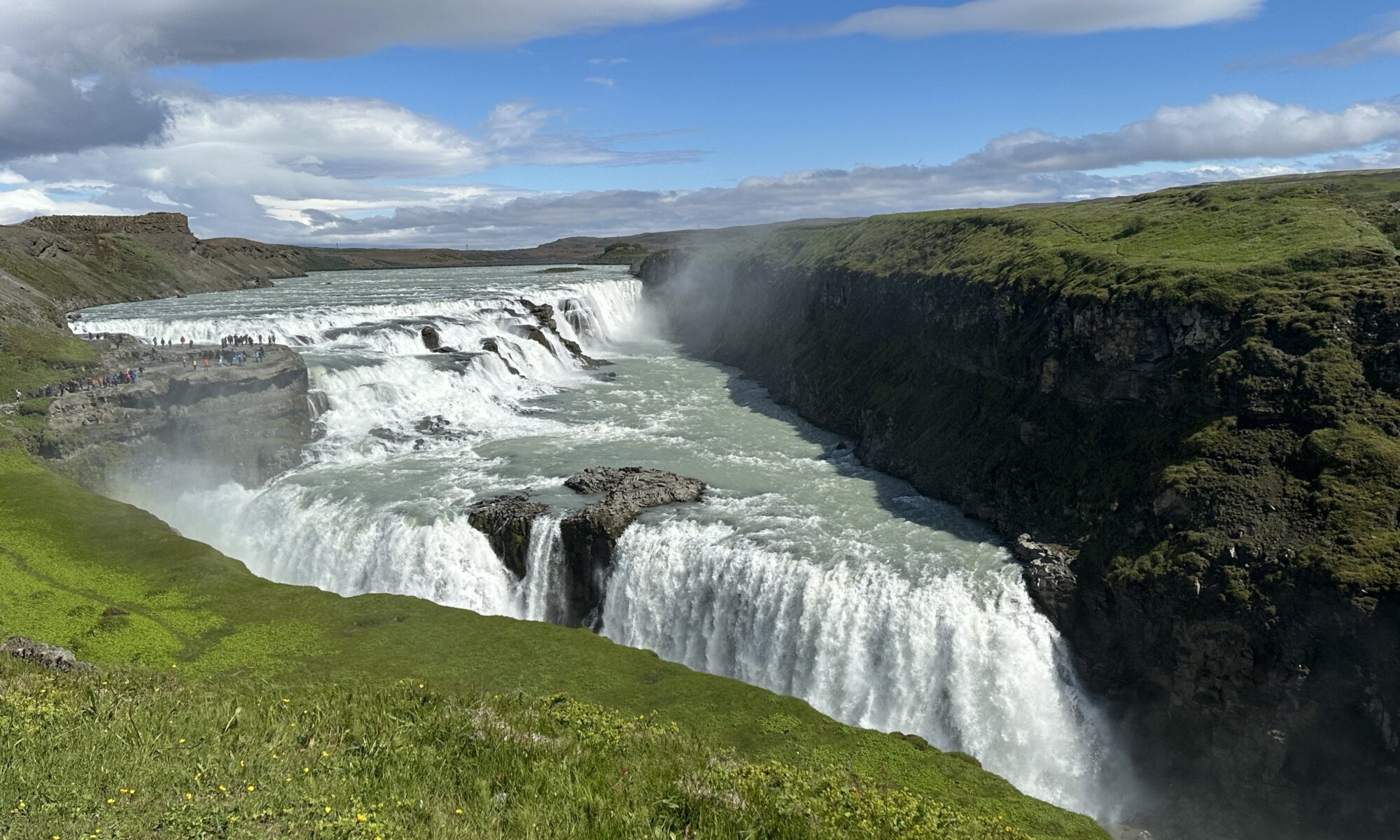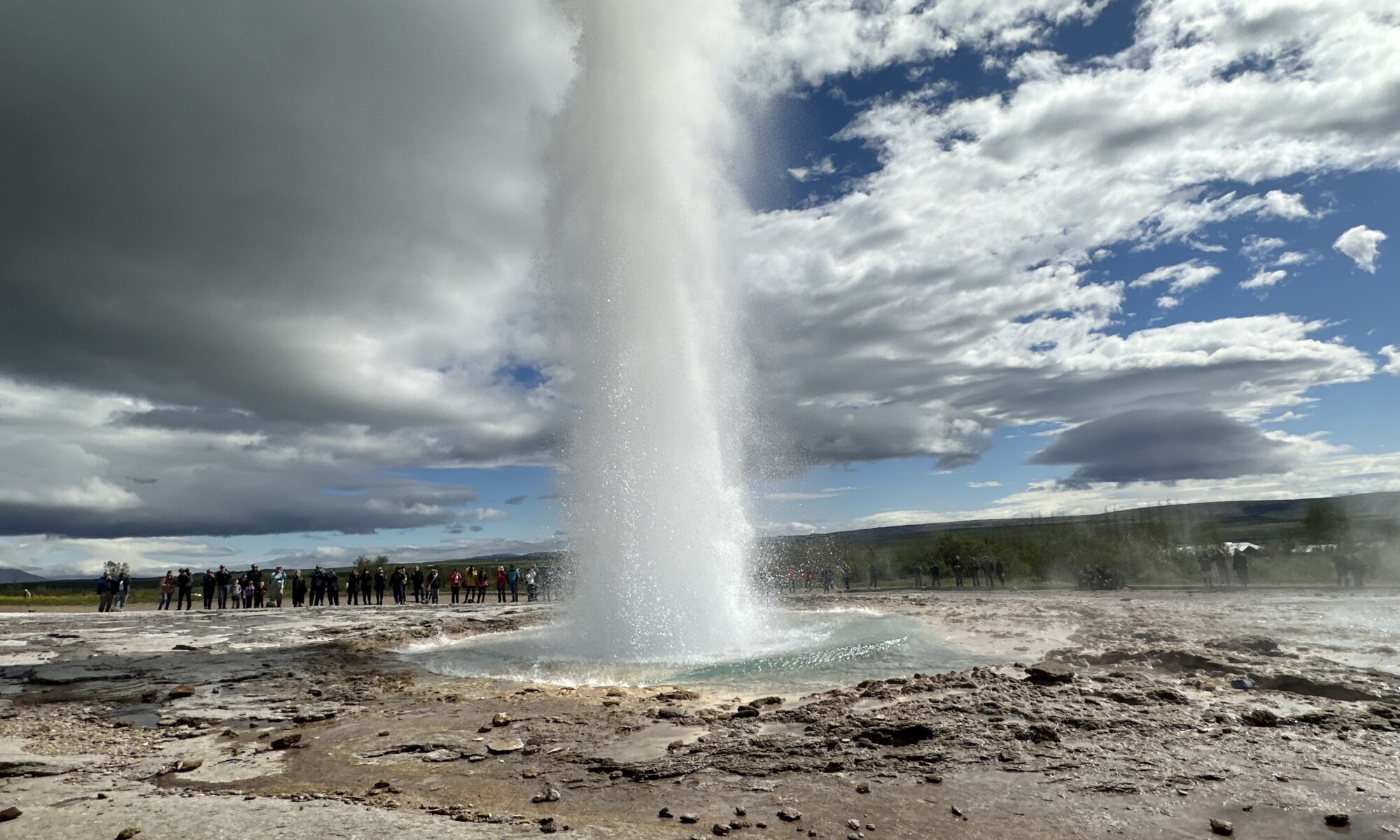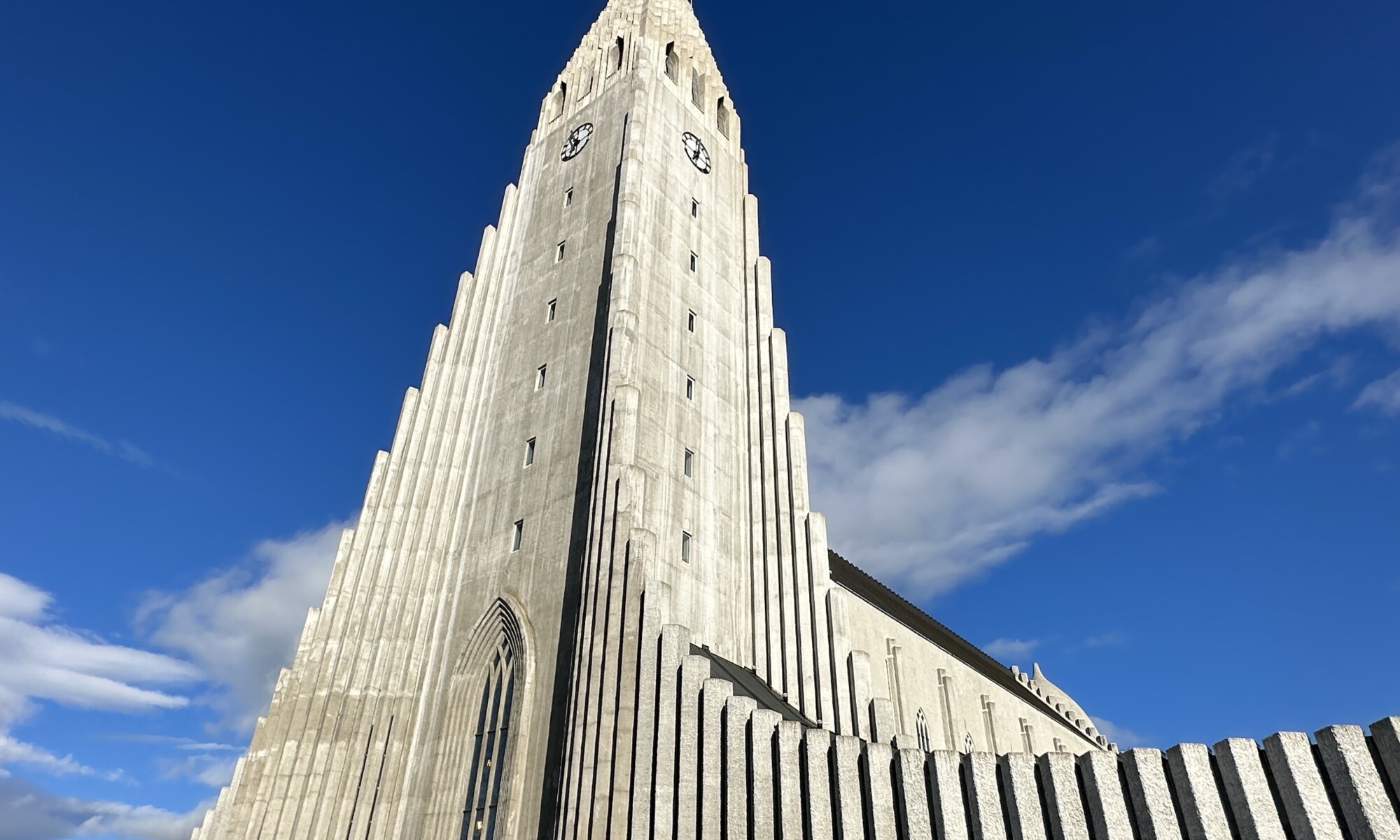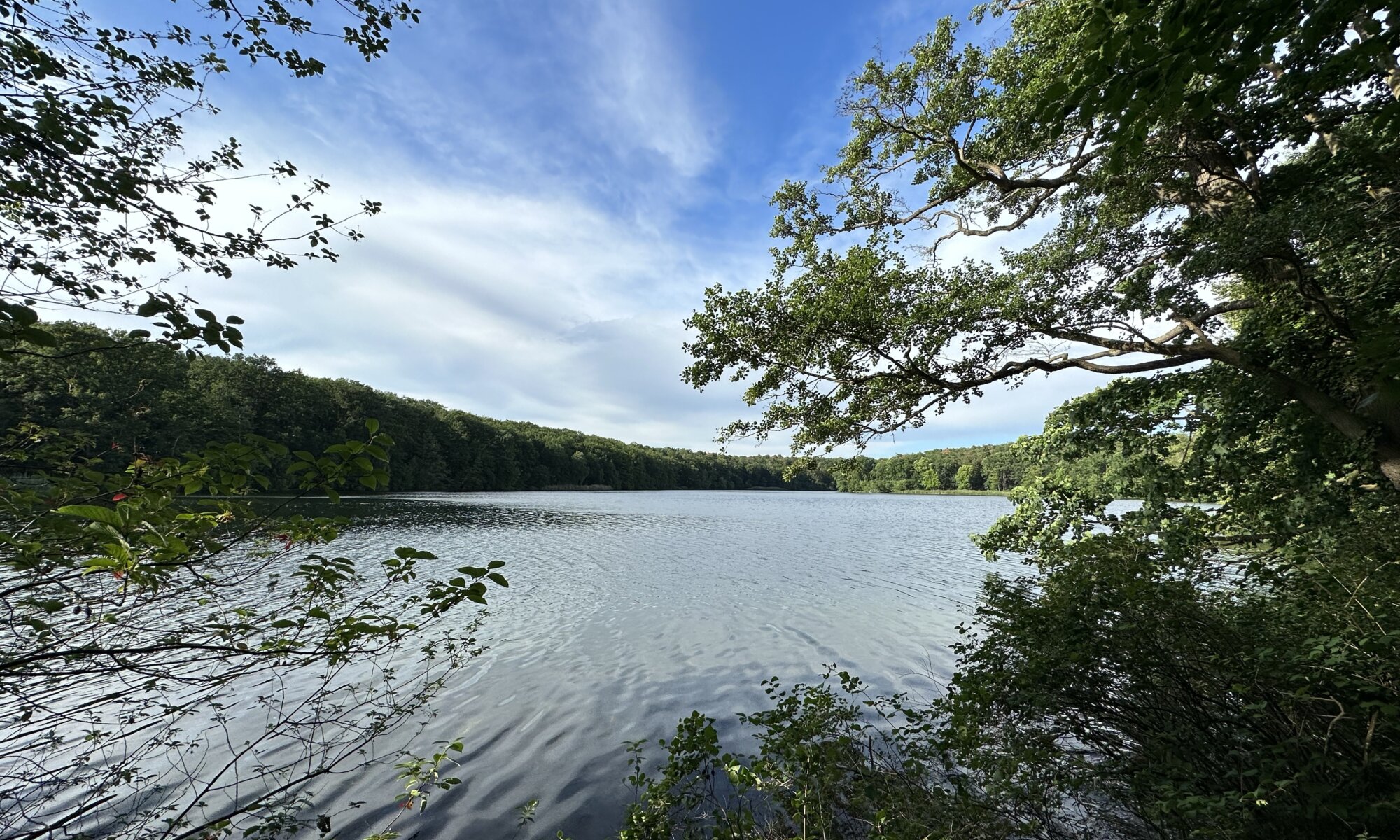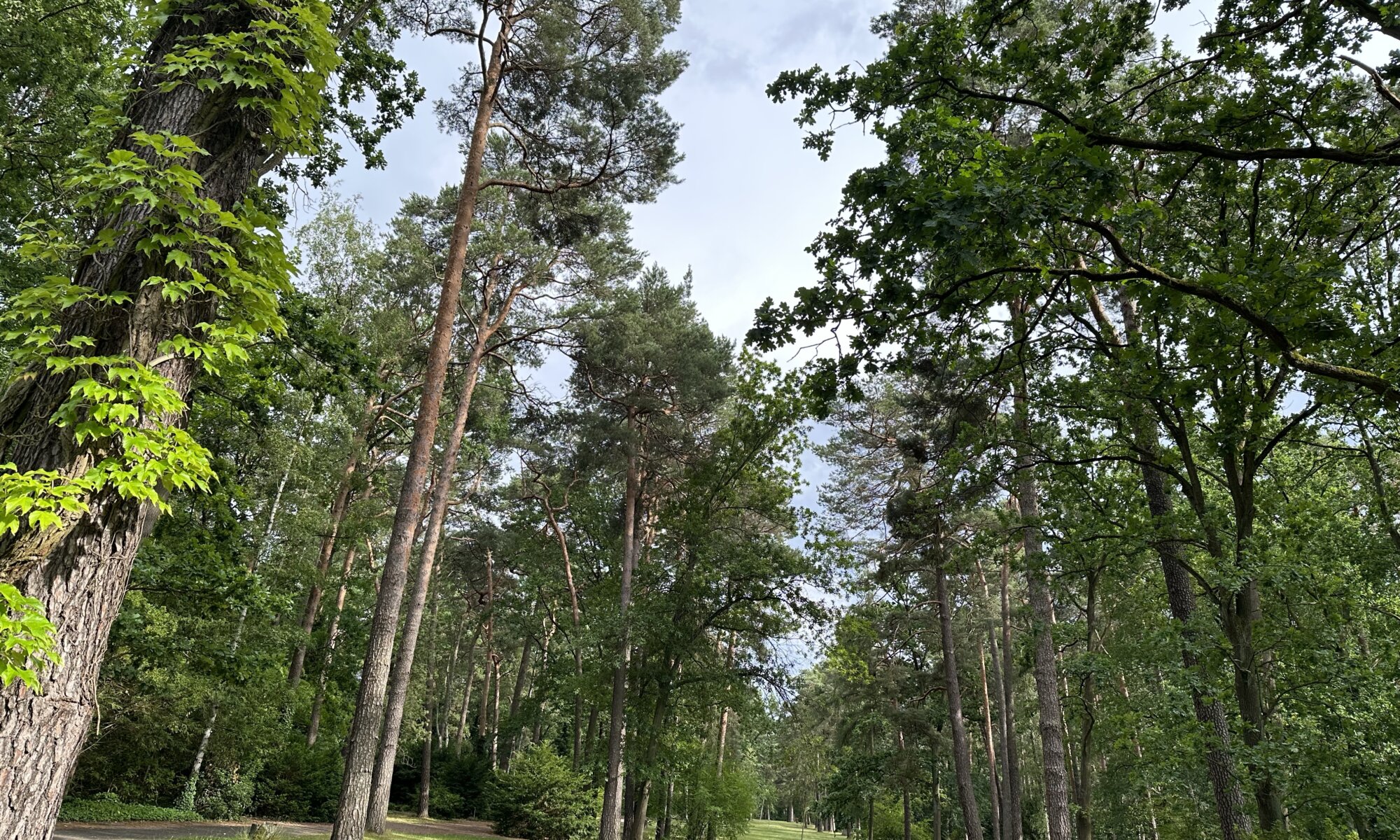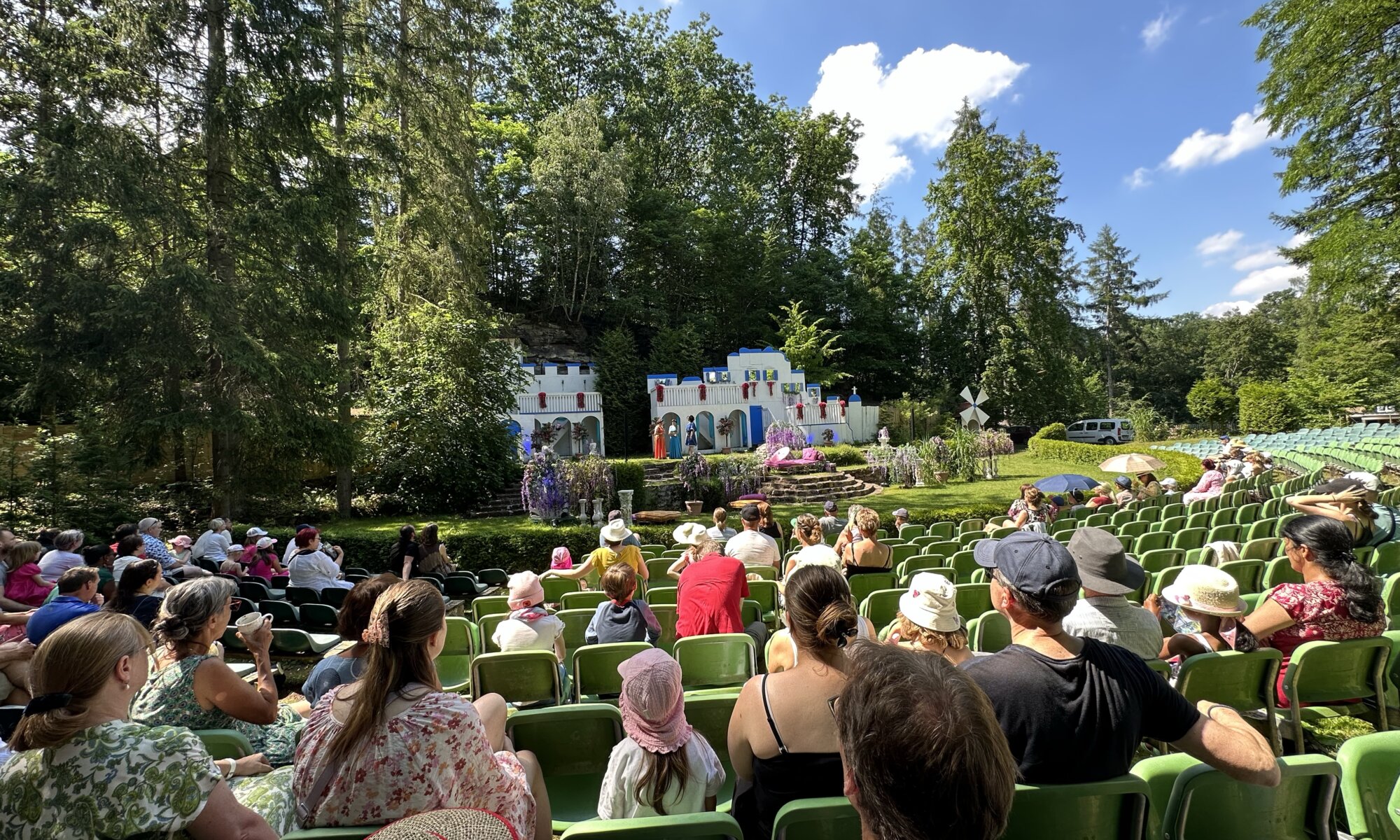The area around Vík í Mýrdal has a nice specialty: beaches with sand black as the night. I mean the real night, not the three hours of slight ‘darkness’ Iceland experiences these days every night. On some days you might go swimming there, but it creates a wonderful atmosphere all year round. From the Black Beach at Vík í Mýrdal you can have a good look at the Reynisfjall rock structures, but you also should take the trip up the hill to the Dyrhólaey viewpoint.
Continue reading “Black beach”Skógafoss
At Skógar you can discover another magnificent Icelandic waterfall, the Skógafoss. Between green rocks it falls over a cliff and you can take a shower underneath if you want. The waterfall is an excellent starting point for a hike: on the right-hand side of the waterfall steps give you the chance for a step and rather long ascent to the top.
Continue reading “Skógafoss”Seljalandsfoss
Iceland has many beautiful waterfalls, but Seljalandsfoss is one of the best. It is the largest one of a series of three waterfalls underneath the Eyjafjallajökull volcano (remember when it stopped air traffic in 2010 completely?). Seljalandsfoss has a specialty that makes it very entertaining: you can walk behind the waterfall without getting too wet. It is an amazing photo opportunity and if you have sunshine you’ll almost all the time see a colorful rainbow.
Continue reading “Seljalandsfoss”Gullfoss
The golden waterfall (‘Gullfoss‘) is a two-level waterfall northeast of Reykjavík and together with places like Þingvellir part of the so-called Golden Circle of Iceland. The waters of the Hvítá river are running over wide cascades and then falling into a gorge, creating a massive amount of spray. It is an amazing sight you can view from different angles: for sure from the top, but you can also take some steps down to the gorge and hike down a path to the cascades – then you’re directly at the center of action and in-between the two levels.
Continue reading “Gullfoss”Strokkur
Geysers are a wonderful natural phenomenon: water is heating up underground and every now and fountain of hot water is splashing out. Maybe the best place to see this on Iceland is the geyser Strokkur at Selfoss (not to be confused with the waterfall carrying the same name). It is very reliable and shooting out water every five to six minutes; a fountain that is 20 to 30 meters high. That is why there is always a large crowd surrounding the hot spring and waiting for the next eruption.
Continue reading “Strokkur”Þingvellir
Northeast of Reykjavík you can find the Þingvellir national park, an area with wonderful nature and special in different ways. First of all, the Eurasian and the American plate drift apart there and form the Almannagjá (‘all men’) valley. You can hike between the high rocks and the Öxará river runs there, forming the beautiful waterfall Öxarárfoss. But this place was also always important in Icelandic history as the location of its ancient parliament, the Alþingi.
Continue reading “Þingvellir”Hallgrímskirkja
One of the most important sights of Reykjavík is the Hallgrímskirkja church. It is a Protestant church in expressionist style, the building looks like a row of basalt columns with different height and therefore fits really well to the island. The 74.5 meters high tower is located on a hill close to the city center and you can buy a ticket to get by elevator to the top – giving you fantastic views on the capital city. The church was built from 1945 on and was finally finished in 1986.
Continue reading “Hallgrímskirkja”Schlachtensee
Berlin has a lot of water in rivers and lakes. The largest lake is the Müggelsee in the East, the one most often used for swimming is the famous Wannsee. Most often considered as the most beautiful lake is the Schlachtensee at Steglitz-Zehlendorf. It has a tubular shape and is often used for swimming due to its good water quality; but you can also have long hikes along its shore or use it for diving or stand-up paddling.
Continue reading “Schlachtensee”Für dich soll‘s rote Rosen regnen
The Waldfriedhof Zehlendorf is a cemetery in a forest belonging to the city quarter Zehlendorf (now Nikolasee) of Berlin, Germany. It was created after World War II and is one of the cemeteries in Berlin where you can find the graves of celebrities which have a strong connection to the city. The cemetery still has the character of a forest and you can enjoy long walks in nice nature; while doing so you will find the graves of personalities like Jakob Kaiser, Paul Löbe, Walter Scheel and Otto Suhr.
Continue reading “Für dich soll‘s rote Rosen regnen”A Midsummer Night’s Dream
The Waldbühne Bremke is located in a forest close to the village of Bremke, belonging to the community of Gleichen. It was created in 1949 honoring the Brothers Grimm and for entertaining visitors mostly with fairytales. The Waldbühne offers 942 seats, the season is always between May and September (with a break for summer vacations). They play family-oriented classics like Snow White, Rumpelstiltskin or The Magic Flute.
Continue reading “A Midsummer Night’s Dream”